Those who are unfamiliar with railroads may not understand why railroads would share locomotives, but there are many good reasons for this long-standing practice. It might seem contradictory for railroads to share locomotives since they’re sometimes in direct competition with each other, but this practice benefits both companies.
Railroads share locomotives in a series of arrangements known as pooled power arrangements. Railroads will share both tracks and locomotives with other railroads to pool resources for increased efficiency.
Railroad transport is considered a utility similar to electricity or water services, and no matter which company provides that utility, the companies are expected to maintain an efficient and reliable service. Pooling resources in railroads is one way to ensure that reliability in a way that also benefits all parties involved in the exchange.
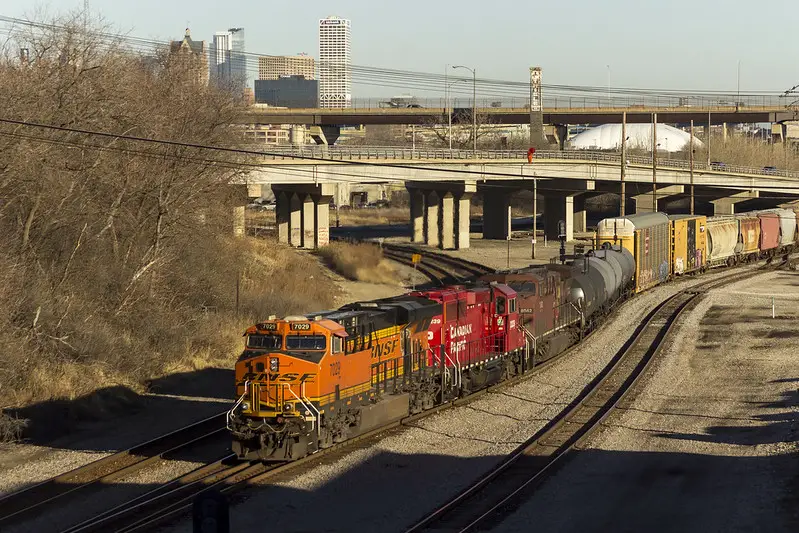
When Railroads Share Locomotives
When railroads share locomotives, this is a process called pooling power. A deal between two railroads to share locomotives is known as a pooled power arrangement.
By pooling their maintenance resources into the same set of locomotives, multiple railroads can split the costs of maintenance and upkeep while also removing the necessity of transferring locomotives off the tracks to make way for competing locomotives. Think of the wasted effort put into swapping out locomotives between railroads when a single locomotive can easily be used for both.
Pooling power doesn’t just make sense from a maintenance standpoint—it also increases the efficiency of both railroads. Without the need to swap locomotives, the service on both railroads is faster. And with two companies putting money into a locomotive’s inspections and repairs, the maintenance of the locomotive’s service is cheaper for either railroad.
When a locomotive operates through the territories of multiple railroads without stopping, this locomotive is said to be running on run-through power. In most cases, it is more efficient to leave the locomotive on the track to carry freight for either line than it is to try and pull the locomotive once it hits a territory edge. Trains operate most efficiently when they can remain running.
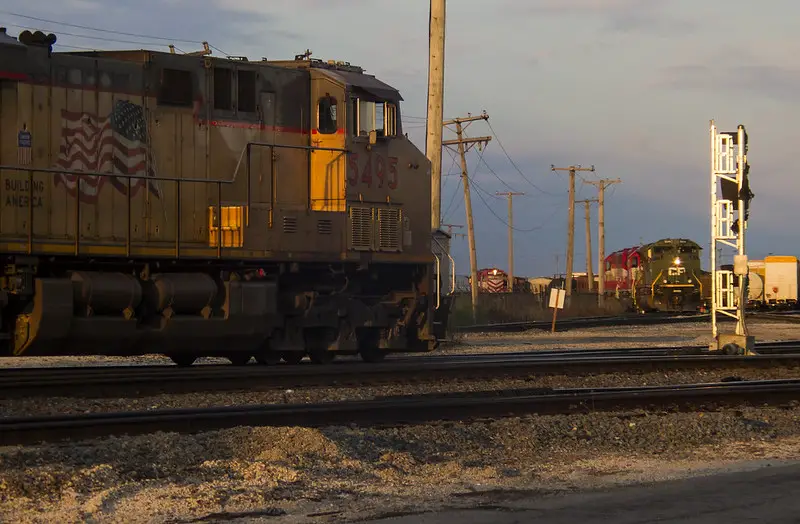
When Railroads Lease Locomotives
Along with sharing locomotives through pre-arranged pooled power agreements, railroads will also sometimes lease individual locomotives. These locomotives are known as leased power. Locomotives are leased for some of the following reasons:
- When a surge of traffic requires more locomotives than usual
- When more locomotives than usual are suspended from operation due to inspections or maintenance operations
- When a railroad ends up with a locomotive unexpectedly out of service
If one railroad finds itself in significant power debt to another railroad, this may result in the railroad setting up a long-term lease of locomotives to another line.
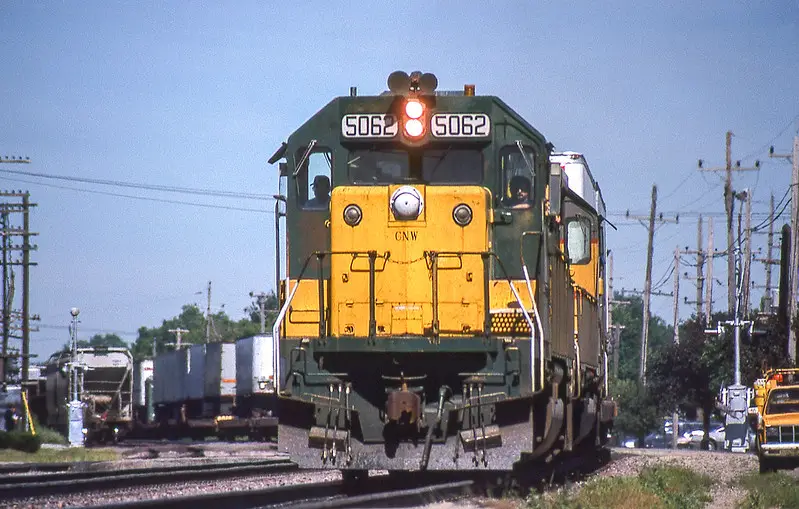
How Do Railroads Account for Shared Locomotives?
As you can imagine, pooling resources (both trackage and locomotive power) can create some complicated paperwork when it comes to accounting for which company owes what and what company has what rights with regards to a certain locomotive’s use.
The charges on both a pooled power locomotive and a leased locomotive are typically measured in horsepower hours. While horsepower hours are technically an outdated unit of measurement in other areas of industry, this unit of measurement is still used to describe the sharing of motive power in the railroad industry.
The horsepower hours are the number of hours that a locomotive was operated multiplied by the horsepower of the locomotive itself. For example, a 2,500 horsepower locomotive ran for one 12-hour shift would equal 30,000 horsepower hours.
Railroads measure locomotive debts in horsepower hours because these debts are often paid back with utility use rather than an exchange of funds. This allows railroads to keep track of when power becomes unbalanced between them. When one railroad starts to accrue too large of a debt in horsepower hours, they will lend out their locomotives to balance the scales.
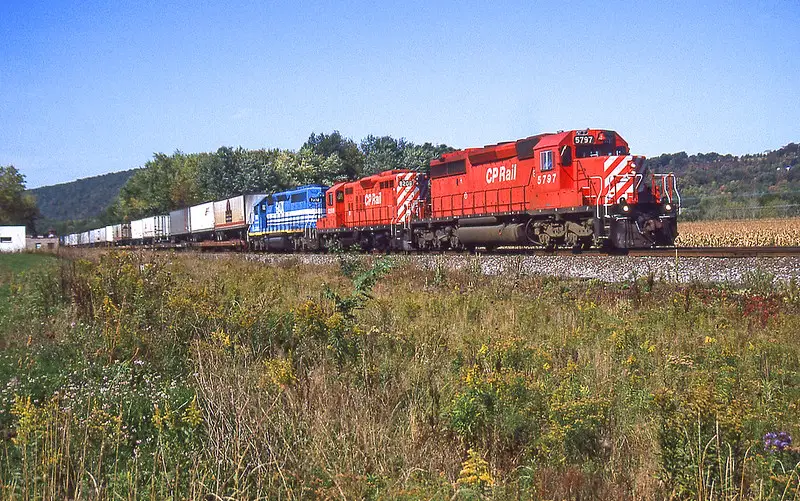
Do Railroads Profit By Providing Run-Through Power?
With the number of run-through locomotives that are regularly used to power railroads other than their home line, a trainspotter has to wonder whether railroads can make any kind of profit by providing run-through power to other railroads.
The truth is that the passing back and forth of horsepower hours from one railroad to another is such a continual give-and-take that there is little profit to be made by providing run-through power to another line. Even if a railroad provides run-through power on one track, they are likely to be taking advantage of another line’s run-through on a different track.
Do Railroads Lend Out Locomotives?
Along with setting up pool arrangements and standard leases, railroads may also arrange to borrow another railroad’s locomotives as a temporary measure. Locomotives may be borrowed for some of the following reasons:
- Detours: If a railroad track becomes washed out or falls into disrepair, the locomotive of the detour track is typically used along with a hosting pilot from the detour track.
- Out of service: If a locomotive has to be pulled out of service for repair or maintenance, the hosting railroad may lend a locomotive to another railroad to get the freight to its destination.
Since all American railroads operate on a universal system and by using pooled resources, it is often in their best interest to work together rather than competitively.
To work around the laws prohibiting railroad monopolies, these railroad companies instead operate through cooperative regional management. Congress prohibited railroad pooling back in 1887, but in practice, the pooling of resources between railroads continues in business today.
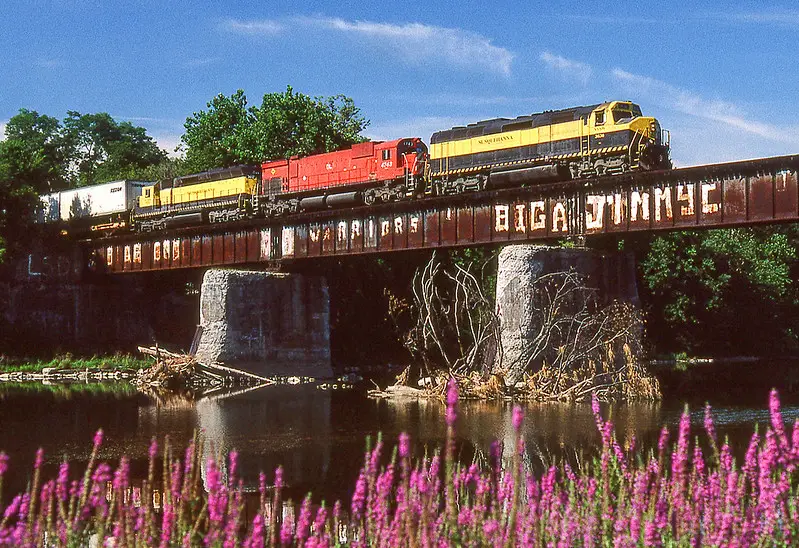
Do Railroads Perform Pooled Maintenance?
While railroads will assume some responsibility for costs when it comes to maintenance and repairs on another railroad’s locomotive if it is in their line territory, this hospitality only extends so far. Hosting railroads will usually pay for a minor repair or inspections on a locomotive in their territory but will send a locomotive back to its home yard for major repairs.
In many cases, if a locomotive only requires a minor repair, this repair will be taken on by the leasing railroad as part of operations or billed to the originating railroad later. It isn’t practical to pull a locomotive out of operation over a cost squabble since stalled operations are usually more costly than repairs would be.
Part of the reason that pooled service and maintenance is such an ingrained part of the railroad industry is because many freight trains are what is known as a unit train. Unit trains are designed to take a single commodity type from one location to another with no stops. Pooled resources for freight trains like shared locomotives help freight trains remain the most efficient land transportation on Earth.
How Can Different Locomotives and Railroads Work Together?
The main reason that different railroads can easily borrow and lease each other’s locomotives is that all railroad cars and locomotives are designed to work interchangeably under the Association of American Railroads (AAR) system.
There are so many different railroad companies that sharing locomotives between them can be a complex dance of accounting and logistics management. Making sure that all of the locomotives and train cars in operation are at least mechanically compatible takes a lot of the guesswork out of sharing locomotives between railways.
Conclusion
While railroads are no longer allowed to create monopolies in transportation, the cooperative management of railroads with regards to shared power pools manages to be advantageous for railway companies and customers alike. Railroads sharing locomotives leads to increased efficiency in transportation times and a faster railway system in general.